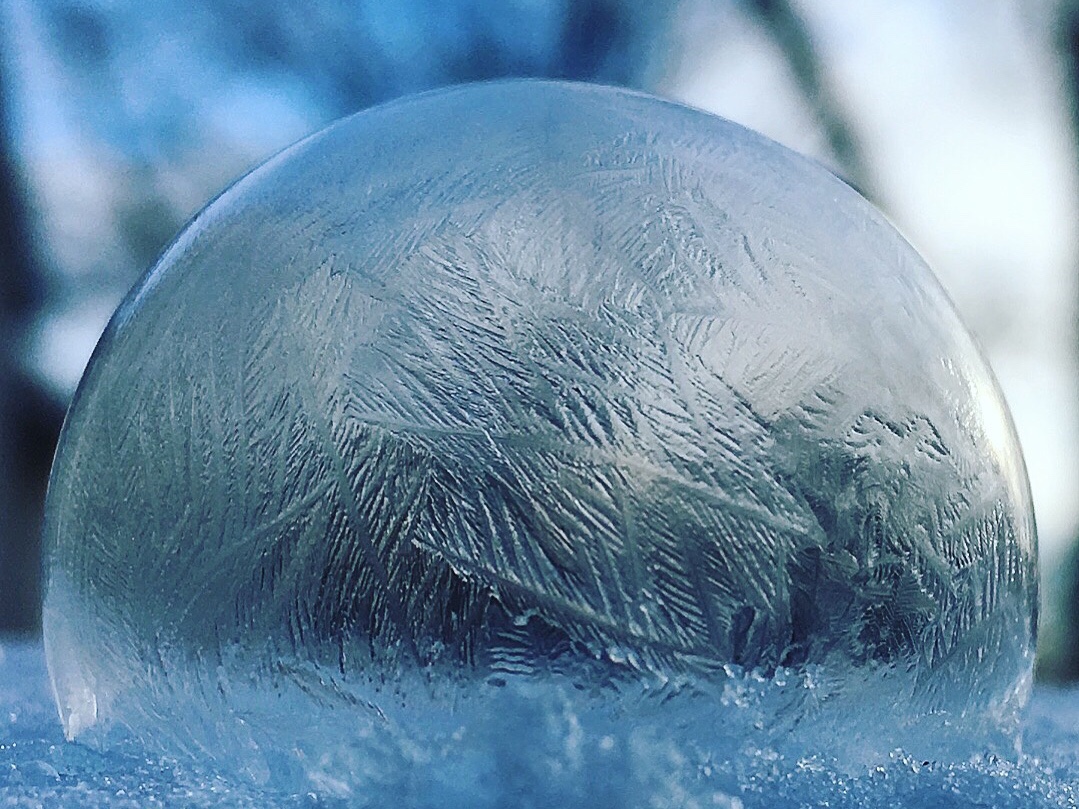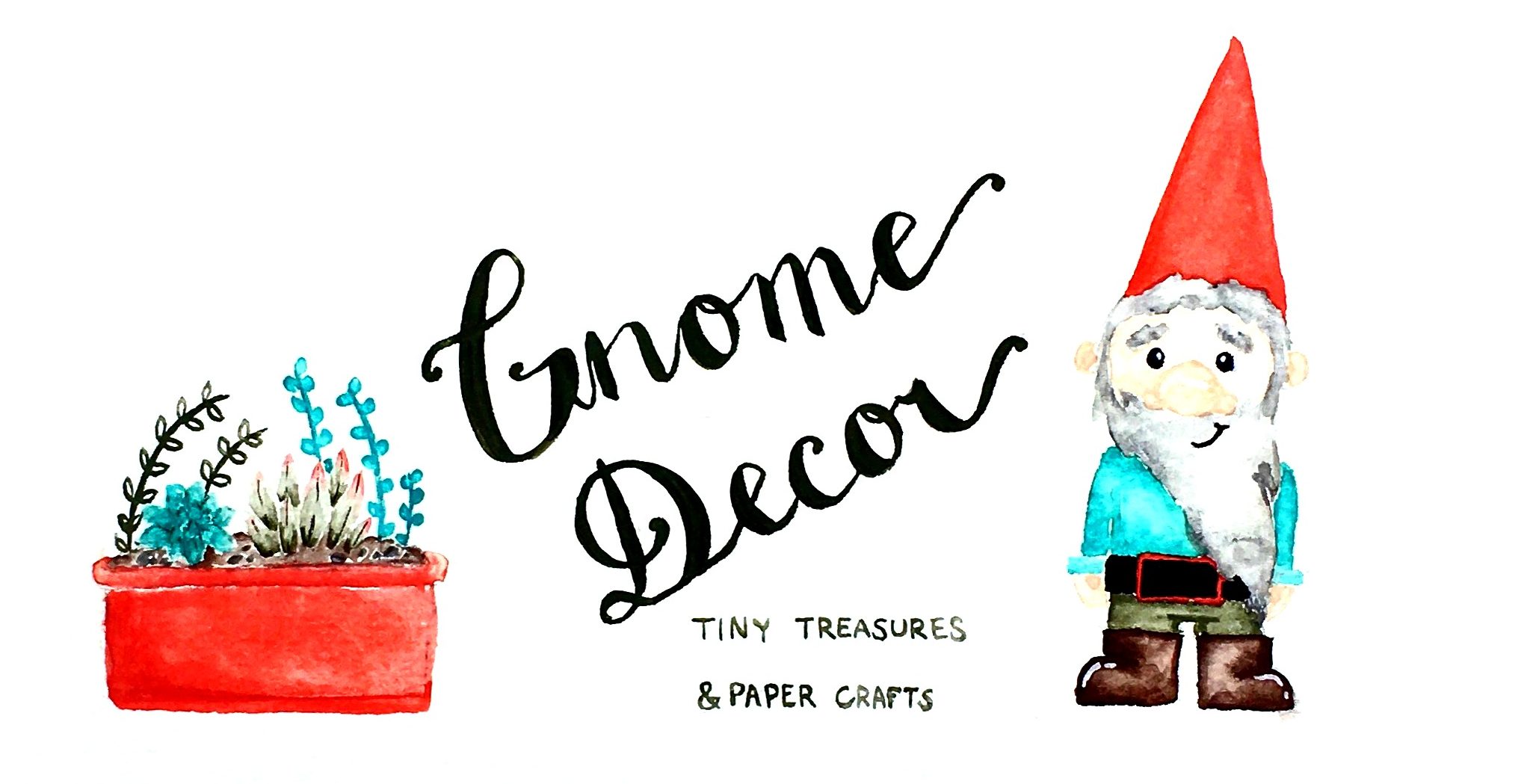Frosty Fun with Frozen Bubbles

Brr… it’s cold out! Here in central Indiana, we’re feeling the effects of the polar vortex that’s affecting a lot of the U.S. and Canada right now. Our high temperature is supposed be below zero tomorrow and I don’t even want to think about the wind chill. January has definitely been a wintry month after a mild December.
My friend Rebecca first told me about frozen bubbles in January 2014, another unforgettable record cold and snowy month. She linked me to an article (the link is now broken) about a mother and son who blew bubbles in the freezing cold and were amazed by the results. I was fascinated and decided I had to try it! Making frozen bubbles seemed like a good way to turn a negative (bone chilling cold weather) into a positive (awesome photos and a fun little science experiment). Here are photos of the bubbles I made back in 2014 on January 6 and 17:



When our high temperatures dipped into the teens a week ago Sunday after winter storm Harper blew in with a fury, I ventured outside for more frozen bubble fun. Since it had been five years since I’d played with frozen bubbles, I first had to make a fresh batch of bubble soap and go through some trial and error with bubble formation. It was a little too windy and “warm” outside especially with the sun (about 14 degrees Fahrenheit) but I was persistent. According to the weather app on my phone, the wind was blowing at 8 mph. And it seemed to kick into high gear whenever I tried to blow a bubble. Weather is key to frozen bubble success. Temperatures in the teens are actually not ideal for frozen bubbles. You’ll have a much higher success rate if you live somewhere where it gets into the single digits or below zero. Make sure you’re close by your door so you don’t stay out more than a couple minutes in these extreme conditions, and can go inside to warm up between bubble attempts! Also bundle up in multiple layers!
I landed these bubbles on the bench that surrounds my deck. I used a garden kneeling pad to get at bubble level for photos, to keep my jeans dry from the snow on the ground, and to help reduce back pain.


I also managed to get one bubble to freeze on the wand. When I held it up to the sun, it looked like a little moon glowing since the sun darkened the background, appropriate since we had a full moon later that night (the super blood wolf moon)!


Most of my bubble photos feature tiny, blurry white blobs, but I did get a few good close-up shots of the icy orbs. This one is my favorite.

There are several bubble recipes available on the internet, and most of them will work well for making frozen bubbles. The recipe I found and modified is listed below. A key ingredient is glycerin. It makes the soap thicker, and the thicker skin of the bubble makes it stronger and keeps the water from evaporating quickly so the bubble lasts longer. You can use store-bought bubble solution instead but it won’t work as well.
Bubble Solution Recipe
- 1 cup hot water
- 1/6 cup Dawn dish liquid soap (1/6 cup is equal to 2 tablespoons + 2 teaspoons)
- ½ tsp Glycerin (found in drugstores)
Other Supplies Needed
- Spoon
- Bubble wand (I found an old one from a tiny jar of store-bought bubble solution I’d gotten as a freebie somewhere. I’d love to experiment with a nicer, larger wand to see if it works better and forms larger frozen bubbles. If you don’t have a wand, twist a circular shape from wire.)
- Jar
- Any flat surface like a porch, deck, bench or patio table
- Fully charged phone if you’re taking photos. Your battery will drain quickly in extreme cold. Keep it nestled in a warm pocket or inside the house when not in use.
Preparing the Bubble Solution
- Pour the hot water into a jar, then slowly add Dawn dish liquid soap. Stir it very slowly with a spoon until well-mixed. Don’t shake or stir rapidly because you don’t want any bubbles or foam to form in the jar.
- Add the glycerin to the solution and again stir to mix very slowly.
- Place the lid on the jar and set it outside to chill for an hour in the cold weather before trying to blow bubbles. Warm bubble solution won’t work.
Weather Conditions Needed
- Temperature <20F, the colder the better and ideally in the single digits or below zero
- No wind (5 mph or less is ideal)
- A fresh snowfall for the prettiest photos (optional)
Keep in mind if you blow bubbles outside when it’s bitter cold, you will need a lot of patience until you get a good bubble to land and then freeze without popping mid-air. I find large bubbles with a thin surface are nearly impossible to land and freeze. Small bubbles are much easier to form, but of course not as thrilling to look at.
Although it may take several minutes or more to successfully land a medium size bubble that sticks and thus freezes, be extremely cautious not to stay outside too long in these weather conditions. It’s easy to get caught up in the fun of it and not even feel cold because you’re moving around and focused on making bubbles, only to realize later when you’re inside that you stayed out WAY too long. That happens to me each and every time. My hands especially get raw and ache later when I am indoors, because I have to take my gloves off to take photos when I’m outside. I need to get some fingerless gloves or gloves that work with touchscreens.
Frozen bubbles last surprisingly long once you get them to land on a surface, stick and freeze. If there is no wind and it is extremely cold, they can last an hour or longer like my bubbles in 2014 did. With a slight wind and warmer conditions, they’ll hang out for about 15 minutes before the top of the bubble tears off, which was the case Sunday. The bubbles go through stages. First the bubble sticks to the surface, then a pretty frost pattern spreads across it. Next the top becomes dented and finally it tears. Eventually the rest of the bubble dissipates. Here are some photos of the denting and subsequent tearing:



So how do frozen bubbles form? Soap bubbles are a layer of water molecules trapped between two layers of soap molecules. When it’s super cold, the water layer freezes before the soap bubble pops, and remains after the soap is gone. The air trapped inside then starts to spread out, which happens slowly if it’s really cold. If it’s cold enough, the bubbles form ice crystals and instead of popping, the crystalline structure of the bubbles will eventually crack instead of popping.
If you live somewhere where winter can be unbearably cold, frozen bubbles can provide a good excuse to get outside. And if you don’t, be grateful! This kind of weather puts you in survival mode!




Related
Related Posts
Snow Buddies: Fast & Easy Creations Made from Snow
I saw special markers used to color snow on Facebook recently. I had no idea…


Marilee | 30th Jan 19
Interesting! I’ve never made frozen bubbles and may not have enough patience to be successful. But did enjoy your fun post. Everyone keep warm!
Wendie | 5th Feb 19
Your frozen bubbles are incredible! I want to try this, but frankly, I’m over this weather! So maybe next year, lol.